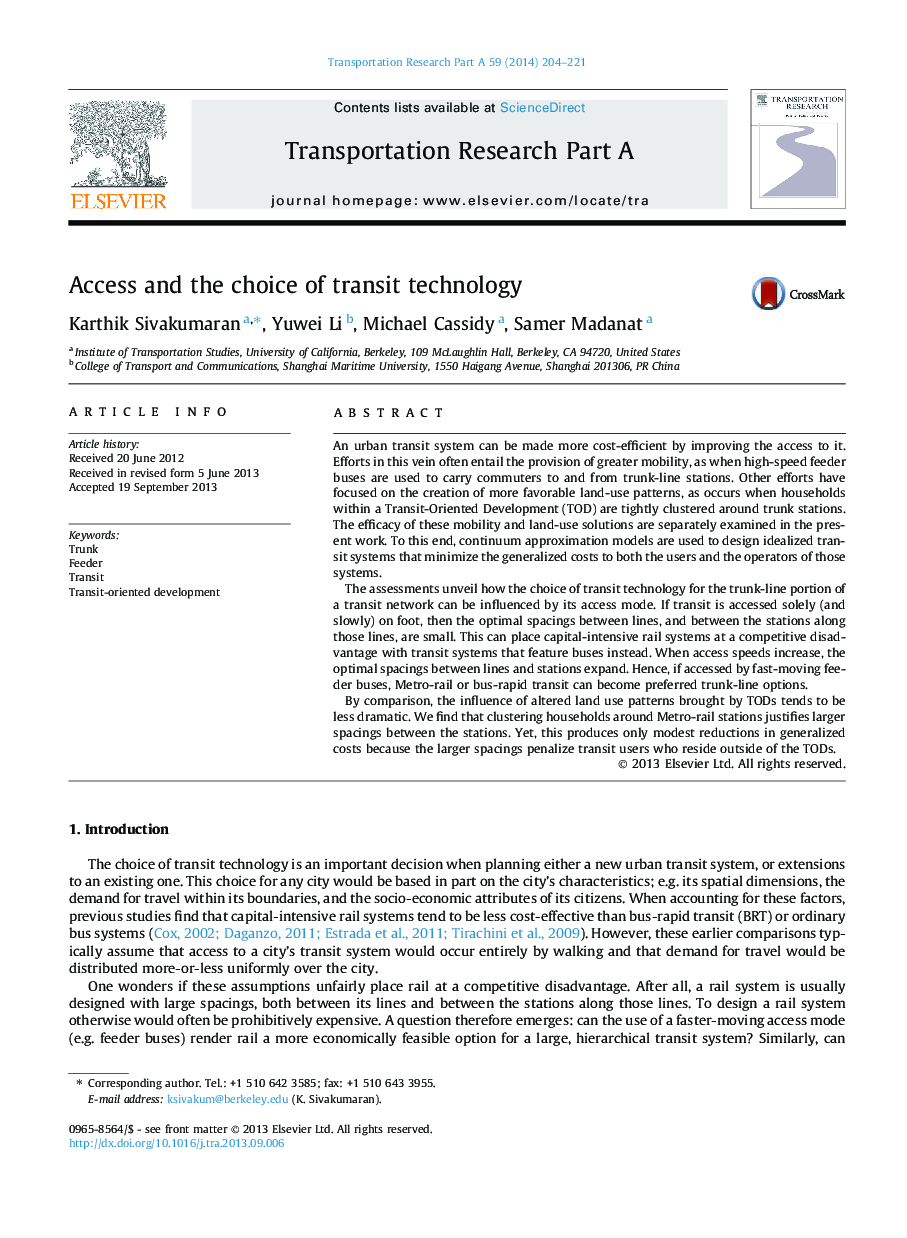| کد مقاله | کد نشریه | سال انتشار | مقاله انگلیسی | نسخه تمام متن |
|---|---|---|---|---|
| 311251 | 533782 | 2014 | 18 صفحه PDF | دانلود رایگان |
• We explore how access to transit stations affects optimal choices of transit technology.
• Bus systems are preferable if their stations are accessed slowly on foot.
• Rail systems become more preferable when accessed at higher speeds via feeder bus.
• Favorably altered land-use patterns exert lesser influence on choice of transit technology.
An urban transit system can be made more cost-efficient by improving the access to it. Efforts in this vein often entail the provision of greater mobility, as when high-speed feeder buses are used to carry commuters to and from trunk-line stations. Other efforts have focused on the creation of more favorable land-use patterns, as occurs when households within a Transit-Oriented Development (TOD) are tightly clustered around trunk stations. The efficacy of these mobility and land-use solutions are separately examined in the present work. To this end, continuum approximation models are used to design idealized transit systems that minimize the generalized costs to both the users and the operators of those systems.The assessments unveil how the choice of transit technology for the trunk-line portion of a transit network can be influenced by its access mode. If transit is accessed solely (and slowly) on foot, then the optimal spacings between lines, and between the stations along those lines, are small. This can place capital-intensive rail systems at a competitive disadvantage with transit systems that feature buses instead. When access speeds increase, the optimal spacings between lines and stations expand. Hence, if accessed by fast-moving feeder buses, Metro-rail or bus-rapid transit can become preferred trunk-line options.By comparison, the influence of altered land use patterns brought by TODs tends to be less dramatic. We find that clustering households around Metro-rail stations justifies larger spacings between the stations. Yet, this produces only modest reductions in generalized costs because the larger spacings penalize transit users who reside outside of the TODs.
Journal: Transportation Research Part A: Policy and Practice - Volume 59, January 2014, Pages 204–221
